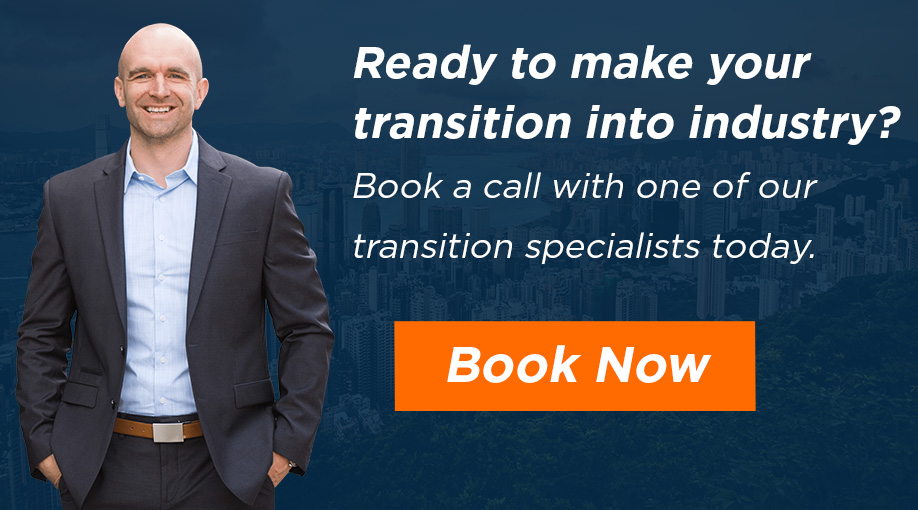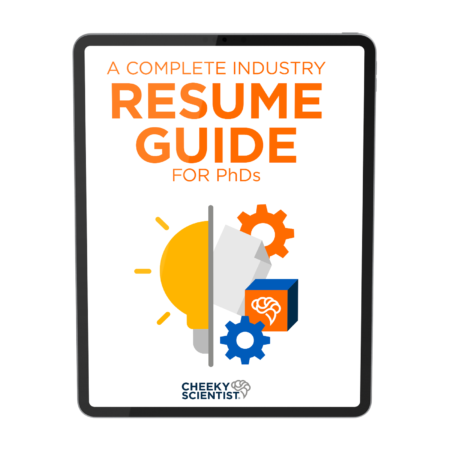How LinkedIn Ranks Job Seekers With PhDs, EdDs & Other Degrees

“Be real Isaiah, there’s not a government bureau keeping track of how our resumes perform.”
This is what a frustrated job seeker said to me recently.
“What do you mean I have a reputation score?” they asked.
“Of course there’s not a bureau dedicated to this, at least not yet” I said.
“But you absolutely are being scored and ranked” I went on, “and your ranking is used to indicate how reputable you are as a job seeker.”
This is what I’ve explained to countless people looking for a job in today’s job market, most of whom were getting initial responses from employers but then stopped hearing back.
Here’s how I explain reputation scoring to job seekers, especially those with PhDs, EdDs and other degrees who spent too much time in academia and too little time learning how to search for a job.
First, you need to understand that your resume will be shown to employers on major job sites like Indeed, LinkedIn and ZipRecruiter.
If your resume gets rejected, as in, employers click the “I don’t want to see this resume” button, or the “Denied” or “Next” buttons repeatedly, those systems will suppress your resume.
Why would they keep showing bad resumes to the businesses who are paying to post their jobs to those sites?
Second, individual company Applicant Tracking System (ATS) software programs link up to Indeed, LinkedIn and ZipRecruiter through their APIs, such as LinkedIn Talent Solutions API, to share your data and ranking.
If, in this example, your LinkedIn profile score is awful, and if the resumes you’re uploading have been rejected, your visibility is suppressed, both on LinkedIn and in the company’s individual ATS software.
As in, your cut. You’re skipped over. And you might be permanently skipped over too.
If you’re looking for a hard number to prove you’re being scored and ranked, navigate to linkedin.com/sales/ssi to look at your own SSI.
This score is out of a hundred and ranks you according to your profile strength, activity and connections.
Fight it all you want. You are being scored.
And are you really surprised though? Do you really think your data is secure? Do you really think you’re not being scored?
Why are companies rushing to use AI in hiring? To quantify you as a job candidate.
So, you have two options: you can evade reality or you can accept this fact and adapt, which means doing the hard work of getting your resume done correctly, as well as your LinkedIn profile.
How To Increase Your SSI Score On LinkedIn
What can you do to increase your LinkedIn SSI score and your overall reputation score as a job seeker?

First, fill in all the sections of your LinkedIn profile. Cut out past experiences that don’t create a compelling narrative for where you want to go in your career, and continue updating your profile weekly to make it better and better.
Next, connect with those working in the careers you want to get into.
Show LinkedIn which sectors of industry you want to get into by connecting with more and more people in that sector.
Currently you can connect with at least 100 new people per week, make sure you’re maximizing this.
You should be posting to your LinkedIn feed weekly as well, and following up with your new connections by sending them messages. These 4 things together – profile strength, connections (quality and quantity), posting activity and LinkedIn Messenger activity, make up the four quadrants, 25% each, of your overall SSI score, which is 100% total and is a great indication of your reputation score as a job seeker.
Increasing your visibility on Linkedin and reputation doesn’t stop with your SSI score.
LinkedIn provides a ton of data to show if your efforts to optimize your profile and connect with the right people are headed in the right direction.
While there are a ton of analytics you can look at on LinkedIn besides your SSI, there are two metrics in particular that can give you excellent insights into whether or not your efforts on LinkedIn are paying off.
The first is “Top Job Titles You’re Being Found For” analytic.
This metric provides insight into how your LinkedIn profile is being discovered by recruiters or hiring managers. It reflects the job titles or roles for which your profile is appearing in search results.
If these titles align with your career aspirations, it’s a strong indication that your profile is well-optimized for your target roles.
However, if there’s a disconnect, it might be time to adjust your profile to better reflect the positions you’re aiming for.
Optimizing your profile involves ensuring your headline, summary, and experience sections are rich with relevant keywords and skills that match your desired job titles.
Recruiters use LinkedIn’s search feature extensively, combining keywords with boolean search operators to find suitable candidates.
Your profile should be visible in these searches, making intelligent contributions, providing helpful answers, and showcasing your passion for your profession.
The second metric to focus on is “ Top Job Titles of Your Searchers”.
This analytic shows the job titles of LinkedIn users who have viewed your profile.
Understanding who is looking at your profile can offer strategic insights into your visibility on the platform.
For instance, if you’re being found by professionals or recruiters in your desired industry or the specific companies you’re interested in, it means you’re likely on the right track.
But, if the viewers’ titles seem unrelated to your career goals, it may indicate that your profile needs further optimization to attract the right audience. This could involve revisiting your endorsed skills, as LinkedIn prioritizes these in search results.
Getting recommendations from colleagues and endorsing others can also enhance your profile’s visibility and attractiveness to the right searchers.
If the above two analytics are headed in the right direction, your SSI score will be increasing too.
How To Use LinkedIn’s Alumni Feature To Get Referrals Fast
If you’re reading this, you likely have a higher education degree. You likely have several degrees altogether too.
Why does this matter? Because those degrees came from colleges or universities with powerful alumni networks that are already active and ready to help you.

A recent report published in Fast Company found that 91% of alumni connections are willing to refer a fellow alum.
So, how can you leverage LinkedIn’s alumni feature to get hired fast?
Start by navigating to your university’s LinkedIn page. From there, you can access the alumni section, which provides a comprehensive list of graduates. This section is typically found under the “Alumni” tab on the school’s LinkedIn page.
You can filter alumni based on various criteria such as graduation year, industry sector, company, job function, and location.
Use the Alumni tab’s filters to narrow down alumni who are working in your target industry or company. This targeted approach helps you find individuals who are most likely to assist in your job search.
Pay special attention to those who hold positions in companies you’re interested in or who work in roles similar to your career aspirations.
Once you’ve identified potential connections, the next step is to engage with them. But, before sending a connection request, consider engaging with their content by liking or commenting on their posts. This approach helps to establish recognition before you reach out directly.
When sending connection requests, personalize your message. Briefly introduce yourself, mention your shared alma mater, and express your interest in their career path or company. Be specific about why you’re reaching out and how you hope to learn from their experiences.
Personalized LinkedIn messages significantly increase the likelihood of acceptance.
After establishing a connection, consider asking for an informational interview or advice rather than immediately asking for a job referral. This step allows you to build a relationship and demonstrate your genuine interest in their career journey.
During these conversations, you can inquire about their work, the company culture, and any advice they have for someone looking to enter the field.
Upgrade To LinkedIn Premium, Or Hack LinkedIn Basic?
One of the questions I get asked the most today by highly educated job seekers is, should I upgrade to LinkedIn premium.
“When should I join LinkedIn Premium?” I’m asked over and over again.
The answer is, when LinkedIn tells you to upgrade. This typically happens in one of two ways.
The first most common time LinkedIn will tell you to upgrade to Premium is when you’ve hit the limit of connection requests on LinkedIn.
Networking is at the heart of LinkedIn’s value proposition, providing a direct line to potential employers, mentors, and peers in your industry.
However, LinkedIn imposes restrictions on the number of connection requests you can send in a given period to encourage meaningful interactions over quantity. When you find yourself consistently hitting this limit, LinkedIn will tell you that you can’t connect anymore.
LinkedIn recently introduced a new limit on the number of connection requests users can send in a week, setting it between 100 and 200 invites based on factors like your SSI score and account age.
LinkedIn Premium can be valuable for job seekers looking to rapidly expand their professional network, connect with hiring managers, or reach out to potential references, but first ask yourself – are you building relationships with the 100 new connections you made this past week in full, or are you just connecting.
Remember, your SSI score on LinkedIn, which is a great indication of your job seeker reputation score, is measured by the number of connections AND how often you follow up with those connections equally.

Before upgrading to Premium, you can try these hacks for bypassing LinkedIn’s connection request limits.
First, try targeting users with Open Profiles allows sending direct messages (DMs) without needing a connection request, bypassing the limit entirely.
Second, you can leverage group memberships and event attendees. Engaging with members of the same LinkedIn groups or event attendees can offer alternative pathways to connect without hitting the limit.
Third, you can sync LinkedIn with your email contacts. Importing email contacts to LinkedIn can facilitate connections beyond the weekly limit, as it’s based on existing relationships outside of LinkedIn.
The second most common time LinkedIn will tell you to upgrade to Premium is when you’ve looked at too many profiles.
LinkedIn’s basic account has restrictions on how many profiles you can view, especially outside your immediate network. For active job seekers, this limitation can be a significant hurdle.
Access to full profiles is crucial for researching potential employers, understanding the backgrounds of hiring managers, and tailoring your application or outreach message accordingly.
With a free LinkedIn account, your profile searches (profile as in people’s profiles) will be limited to 1000 profiles (or, 100 pages of 10 results). There’s also a commercial use limit, which is around 300 company searches in a month.
Premium accounts have the privilege of unlimited profile browsing, ensuring that you can conduct thorough research on companies, roles, and individuals without interruption. However, a simple hack for getting more searches is to simply use a 2nd or 3rd profile.
I don’t recommend creating a duplicate profile though or using a second profile to actually connect with people as this is likely against LinkedIn’s terms and can get your primary account locked.
Another hack for getting around the profile search limit is to split your searches.
To see more than 1000 results, divide your searches into smaller segments using various filters such as geography, industry, function, seniority, school, and current company. This method allows for more tailored and efficient search results without hitting the cap.
In conclusion, platforms like LinkedIn have become indispensable tools, employing complex algorithms and reputation scoring systems to rank job seekers, particularly for individuals armed with advanced degrees like PhDs and EdDs. This article has shed light on the critical aspects of how LinkedIn’s scoring mechanisms work and the importance of actively managing one’s digital presence to enhance job prospects. It underscores the reality that job seekers are evaluated beyond their resumes, through their interactions, network quality, and the strategic content of their profiles. By embracing these insights and employing the strategies outlined, such as optimizing LinkedIn profiles, increasing network engagement, and leveraging alumni connections, job seekers can significantly improve their visibility and attractiveness to potential employers.

ABOUT ISAIAH HANKEL, PHD
CEO, CHEEKY SCIENTIST & SUCCESS MENTOR TO PHDS
Dr. Isaiah Hankel is the Founder and CEO of Cheeky Scientist. His articles, podcasts and trainings are consumed annually by millions of PhDs and other professionals in hundreds of different countries. He has helped PhDs transition into top companies like Amazon, Google, Apple, Intel, Dow Chemical, BASF, Merck, Genentech, Home Depot, Nestle, Hilton, SpaceX, Tesla, Syngenta, the CDC, UN and Ford Foundation.
Dr. Hankel has published 3X bestselling books and his latest book, The Power of a PhD, debuted on the Barnes & Noble bestseller list. His methods for getting PhDs hired have been featured in the Harvard Business Review, Nature, Forbes, The Guardian, Fast Company, Entrepreneur Magazine and Success Magazine.
More Written by Isaiah Hankel, PhD































